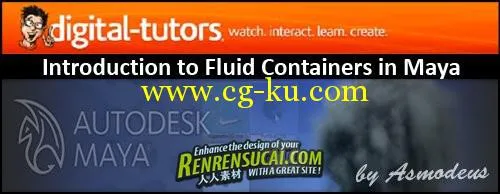Digital Tutors - Introduction to Fluid Containers in Maya | .flv | +Project Files | 736Mb
Lesson Outline (27 lessons)
This training will be covering how to generate fluid simulations from scratch and all of the key attributes in the fluid shape node A few things that we will learn in this course will include dynamic simulation settings, adjusting temperature and fuel, converting the fluid simulation into geometry and working with the shading attributes to name a few. This course is perfect for beginning artist who are new to Maya and Fluids as well as seasoned Maya artists looking for an explanation of what a particular attribute does.
This course is an introductory look at Fluid Containers both 2D and 3D in Maya. Fluids in Maya is part of the Unlimited toolset and has the ability to create some amazing simulations that are extremely hard to achieve with particle simulations alone. This course will explore the different attributes in the Fluid Shape node as well as the workflow when creating fluid simulations. The goal of this course is to help you gain a level of comfort with Maya Fluids so you will be prepared for the advanced fluids course. We also hope you will gain the confidence to experiment on our own and learn how to create your very own simulations in Maya.
1. Introduction and Project Overview
3. Adding emitters and setting resolution & boundaries
5. Exploring content methods of the Fluid Shape node
7. Adjusting the dynamic simulation attributes
9. Content details - Velocity & Turbulence
11. Surface rendering
13. Adjusting the shading attributes
15. Lighting fluid simulations
17. Painting fluid into a container
19. Using curve to drive simulations
21. Extending the fluid container
23. Rigid body simulations with fluids
25. Caching fluids simulations
27. Adjusting attributes on an emitter
2. Difference between 2D and 3D containers
4. Using height fields with containers
6. Display attributes of the Fluid Shape node
8. Content Details - Density
10. "Content Details - Temp, Fuel & Color"
12. Converting fluid simulation to polygon surface
14. Adding noise texture to a fluid container
16. Emitting fluids from objects
18. Adjusting fall off
20. Working with initial states
22. Using Geometry as collision objects
24. Disrupting fluids with motion fields
26. Using fluids to texture objects



发布日期: 2010-11-10